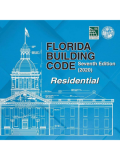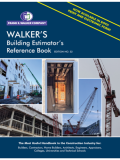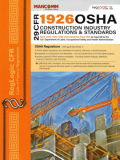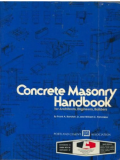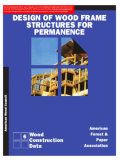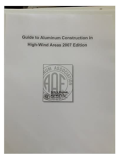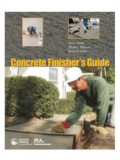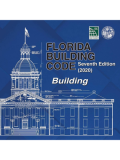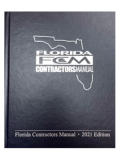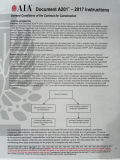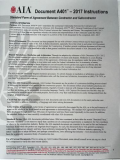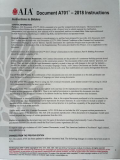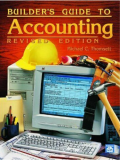Florida Specialty Structure Contractor License
Florida Specialty Structure contractors can legally engage in contracting involving the following type of work:
- Fabric Coverings on:
- Screened porches
- Screened enclosures
- Metal substructures
- Preformed panel-post and Beam roofs
- Pool enclosures
- Manufactured housing roof-overs
- Acrylic or Vinyl panel window enclosures
- Aluminum and vinyl fences
- Replacement or Installation of windstorm protective devices
- Residential glass window and Door enclosures
- Guardrails
- Handrails
- Sunrooms
- Fascia
- Siding
- Soffit
- Gutters
- Single story self-contained aluminum utility storage structures (cannot exceed 720 sq. foot)
- The Specialty Structure License limited scope does not include:
- Alterations to the structural integrity of the building including but not limited to:
- Load bearing walls and Foundations
- Lintels
- Roof trusses
- Alterations to the structural integrity of the building including but not limited to:
Except for Impact resistant glazing, the replacement or installation of windstorm protective devices shall be unlimited.
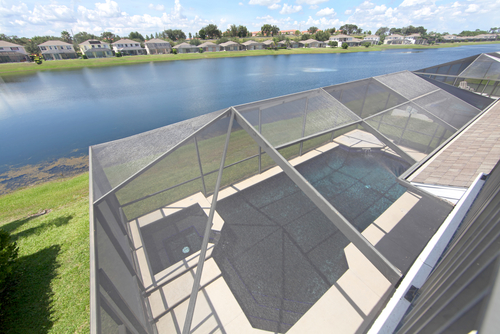
How to Get a Specialty Structure Contractor's License in Florida
- Be 18 years of age.
- Pass all parts of the exam(s) (within four years of the first attempt).
If an applicant has a Bachelor's degree in building construction or a related field, as well as a 3.0 GPA or higher, the applicant is only required to take the business exam. - Pay the fee for the Application.
- Complete the application form using the Online Services, or the Printable Application.
- Be of good moral character.
- Obtain worker's compensation and general liability coverage.
- Demonstrate financial responsibility by submitting a Credit Report:
- 660 FICO credit score or higher (applicant must submit a bond or irrevocable letter of credit if below 660 - FICO derived).
- If FICO score is less than 660, the applicant must take a 14-hour financial responsibility course.
- If applicable, provide proof of satisfaction of liens, judgments, and bankruptcy discharge.
- Background check with Electronic Fingerprints.
- Obtain public liability and property damage insurance.
- Obtain workers' compensation or exemption from workers compensation insurance within 30 days of issuance of their license.
- Satisfy one of the experience requirements set forth by the CILB:
- A combination of Experience and Education
- One year proved experience that applies to the category for which you are applying and a four-year construction-related degree from an accredited college (equivalent to 3 yrs. experience), or
- No less than three years of credits from accredited college-level courses, and One year of experience as a foreman, or
- Two years of credits from accredited college-level courses, one year experience as a foreman, and One year experience as a worker, or
- One year of experience as a foreman, one year of credits from accredited college-level courses, and two years of experience as a worker, or
- Four years of experience as a foreman or worker of which at least one year must have been as a foreman.
- The board expects the applicant to have experience in the following areas of the Specialty Structure trade:
- Foundations
- Excavating
- Laying Out
- Forming, and
- Placing Concrete Slabs, OR
- Excavating, and
- Laying Out
- Forming, and
- Placing Pier-type Post Footings
- Wall Sections
- Screen Walls
- Framed Solid Panel Walls
- Screen and Storm Doors
- Composite Metal Panel Walls
- Roof Sections
- Screen Roofs
- Windows
- Vinyl Windows, or
- Glass Windows
- Wall Sections (additional)
- Corner Cables
- Rigid Bracing
- Other (additional)
- Siding
- Soffit
- Fascias
- Gutters
- Downspouts
- Foundations
- Military Service
Note: As part of the application applicant must submit the Fee Waiver and Military Service Verification for licensure- One year of experience as a foreman applicable to the category for which you are applying, and three years of military service.
- One year of experience as a worker or foreman applicable to the category for which you are applying, one year of experience as a foreman, and two years of military service.
- Two years of experience as a worker or foreman applicable to the category for which you are applying, and one year of military service.
- A combination of Experience and Education
- Pass the Specialty Structure and Business & Finance exams.(sign up for the exams)
- Submit the complete Specialty Structure application form to:
Department of Business and Professional Regulation
2601 Blair Stone Road
Tallahassee, FL 32399-0783
Florida Specialty Structure Contractor Exams
Florida Specialty Structure Contractors must pass two exams prior to obtaining their license. Do not sign up to take your exams until you obtain your books and begin studying for them!
Florida Specialty Structure Contractor License Exam
- Testing Method: Computer-based testing
- Testing Company: Pearson Vue©
- Number of Questions: 80
- Types of Questions: Multiple Choice
- Time Allowed: 300 Minutes
- Minimum Passing Score: 70%
- Subjects Involved:
Foundations (7,5 %)
- Excavating, laying out, forming and placing pier-type post footings
- Laying forms
- Measuring techniques
- Using a builder's level for grading
- Linear measuring
- Reinforcing materials
- Wire and rod
- Fiber
- Concrete mixtures
- Vapor barriers
- Compaction
- Grading
- Cement finishing
- Broom
- Smooth
- Placing CMU kneewalls
- Measuring techniques
- Using a builder's level for grading
- Linear measuring
- Reinforcing materials
- Wire and rod
- Mortar mixtures
- Placement of concrete block
- Thickness of joints
- Excavating, laying out, forming and placing pier-type post footings
Wall Sections (15%)
- Fabricating and installing screen walls to support screen roofs
- Span tables
- Beam sizing
- Post spacing
- Fastening methods and placement
- Sizing
- Placement
- Anchoring methods for existing structures and slabs
- Friction and masonry anchors
- Sizing
- Placement
- When to use
- Cutting equipment and techniques
- Measurement
- Materials compatibility
- Mesh density of screens
- Pitch requirements
- Wind load zones
- Caulking
- Where and how to install kickplates
- Corner cables and slant rigid bracing
- Safety requirements for ladders, scaffolds, rolling platforms, and walk boards
- Metal forming brakes safety
- Cutting equipment safety
- Various hand and power tools (e.g., power shears, wrenches, and snips)
- Span tables
- Fabricating and installing screen walls to support metal roofs
- Cutting equipment and techniques
- Measurement
- Materials compatibility
- Mesh density of screens
- Pitch requirements
- Wind load zones
- Wind load zones
- Where and how to install kick plates
- Comer cables and slant rigid bracing
- Fabricating and installing framed solid walls (glass or metal) to support metal roofs
- Span tables
- Beam sizing
- Post spacing
- Fastening methods and placements
- Sizing
- Placement
- Anchoring methods for existing structures or slabs
- Friction and masonry anchors
- Sizing
- Placement
- When to use
- Cutting equipment and techniques
- Measurement
- Materials compatibility
- Mesh density of screens
- Pitch requirements
- Wind load zones
- Caulking
- Where and how to install kick plates
- Span tables
- Fabricating and installing composite metal panel walls
- Span tables
- Beam sizing
- Post spacing
- Fastening methods and placements
- Sizing
- Placement
- Anchoring methods for existing structures and slabs
- Friction and masonry anchors
- Span tables
- Fabricating and installing corner cables and rigid bracing
- Tying new walls to existing structure
- Caulking and sealing techniques and requirements
- Fabricating and installing screen and storm doors
- Measurement
- Fastening methods and placements
- Sizing
- Placement
- Anchoring methods for existing structures and slabs
- Sealing techniques and requirements
- Screen proper flashing to existing structures
- Caulking and sealing techniques and requirements
- Fabricating and installing screen walls to support screen roofs
Roof Sections (15%)
- Fabricating and installing standing seam and pan roofs
- Structural spacing and support charts (span tables)
- Fastening techniques and requirements
- Caulking and sealing techniques and requirements
- Flashing method and requirements
- Wind load requirements
- Roof attachment receivers
- Fabricating and installing screen roofs
- Structural spacing and support charts (span tables)
- Fastening techniques and requirements
- Wind load zones
- Roof attachment
- Roof types
- Dome
- Hip
- Flat
- Gable
- Screen panel sizing
- Gusseting
- Safety requirements for ladders, scaffolds, rolling platforms, and walk boards
- Fabricating and installing standing seam and pan roofs
Insulation (7,5 %)
- Installing rigid insulation
- Types of insulation
- Urethane
- Polystyrene
- Covering protection of insulation
- Thermal resistance (R values)
- Caulking compatibility
- Types of insulation
- Installing batt insulation
- Thermal resistance (R values)
- Installing rigid insulation
Windows (15%)
- Installing and replacing vinyl windows in wood frame walls
- Fastening techniques and requirements
- Sealing techniques and requirements
- Wind load requirements
- Linear measuring
- Installing and replacing vinyl windows in masonry walls
- Fastening techniques and requirements
- Sealing techniques and requirements
- Wind load requirements
- Installing and replacing vinyl windows in metal walls
- Fastening techniques and requirements
- Sealing techniques and requirements
- Wind load requirements
- Strengthening walls for retrofitted windows (glass not vinyl)
- Linear measuring
- Installing and replacing glass windows in wood frame walls
- Fastening techniques and requirements
- Sealing techniques and requirements
- Linear measuring
- Installing and replacing glass windows in masonry walls
- Fastening techniques and requirements
- Sealing techniques and requirements
- Wind load requirements
- Installing and replacing glass windows in metal walls
- Fastening techniques and requirements
- Sealing techniques and requirements
- Wind load requirements
- Strengthening walls for retrofitted windows (glass not vinyl)
- Linear measuring
- Installing and replacing vinyl windows in wood frame walls
Post and Beam Structures (15%)
- Installing post and beam structures under wood roofs
- Fastening techniques and requirements
- Anchoring techniques and requirements
- Safety requirements for ladders, scaffolds, rolling platforms, and walk boards
- Carport assembly requirements and techniques
- Patio assembly requirements and techniques
- Installing post and beam structures under metal roofs
- Fastening techniques and requirements
- Anchoring techniques and requirements
- Safety requirements for ladders, scaffolds, rolling platforms, and walk boards
- Carport assembly requirements and techniques
- Patio assembly requirements and techniques
- Installing post and beam structures under wood roofs
Roofovers (15%)
- Installing raised metal standing seam roofovers
- Fastening techniques and requirements
- Sealing techniques and requirements
- Insulation techniques and requirements
- Caulking and sealing techniques and requirements
- Structural spacing and support tables (span tables)
- Venting techniques and requirements
- Safety requirements for ladders, scaffolds, rolling platforms, and walk boards
- Metal forming breaks safety
- Cutting equipment safety
- Various hand and power tools (e.g., power shears, wrenches, and snips)
- Installing flat down metal standing seam roofovers
- Fastening techniques and requirements
- Sealing techniques and requirements
- Insulation techniques and requirements
- Caulking and sealing techniques and requirements
- Structural spacing and support tables (span tables)
- Venting techniques and requirements
- Installing raised metal laminated roofovers
- Installing flat down metal laminated roofovers
- Installing raised vinyl blanket roofovers
- Installing flat down vinyl blanket roofovers
- Installing raised metal standing seam roofovers
Siding, Soffit, Fascias, Gutters and Downspouts (10%)
- Installing rectangular gutters
- Fastening techniques and requirements
- Sealing techniques and requirements
- Spacing
- Sizing gutters and downspouts
- Nailing requirements and spacing
- Spacing for expansion and contraction
- Preparation for fastening
- Installing seamless gutters
- Fastening techniques and requirements
- Sealing techniques and requirements
- Spacing
- Sizing gutters and downspouts
- Nailing requirements and spacing
- Spacing for expansion and contraction
- Preparation for fastening
- Installing water diverters
- Fastening techniques and requirements
- Sealing techniques and requirements
- Caulking and sealing techniques and requirements
- Sizing gutters and downspouts
- Nailing requirements and spacing
- Installing lap type gutter expansion joints
- Installing butt type gutter expansion joints
- Installing gutter accessories (e. g., baffles, screens, strainers)
- Fastening techniques and requirements and overlapping
- Sizing gutters and downspouts
- Nailing requirements and spacing
- Spacing for expansion and contraction
- Installing downspouts
- Fastening techniques and requirements and overlapping
- Sizing gutters and downspouts
- Nailing requirements and spacing
- Spacing for expansion and contraction
- Installing miters
- Installing starter strips
- Fastening techniques and requirements and overlapping
- Nailing requirements and spacing
- Spacing for expansion and contraction
- Application of weatherproofing
- Insulation techniques and requirements
- Preparation for fastening
- Installing soffit, roof and gable vents
- Fastening techniques and requirements and overlapping
- Sizing vents
- Nailing requirements and spacing
- Spacing for expansion and contraction
- Application of weatherproofing
- Backer boards
- Spacing of viny
- Fastening into cement
- Preparation for fastening
- Removing and replacing wood sheathing
- Fasteners to be used depending on thickness of sheathing
- Installing aluminum, vinyl, and other siding
- Fastening techniques and requirements and overlapping
- Nailing requirements and spacing
- Spacing for expansion and contraction
- Application of weatherproofing
- Backer boards
- Preparation for fastening
- Safety requirements for ladders,scaffolds, rolling platforms, and walk boards
- Metal forming brakes safety
- Cutting equipment safety
- Various hand and power tools (e.g., power shears, wrenches, and snips)
- Installing vapor barriers
- Installing downspout hangers
- Installing furring strips
- Fastening techniques and requirements
- Insulation techniques and requirements
- Caulking and sealing techniques and requirements
- Nailing requirements and spacing
- Application of weatherproofing
- Preparation for fastening
- Spacing for horizontal and vertical siding
- Most commonly used furring strips over brick or masonry
- Constructing and installing splash pans
- Installing rectangular gutters
- Official list of subjects for the Specialty Structure contractor exam
Florida Specialty Structure Business and Finance Exam
- Testing Method: Computer-based testing
- Testing Company: Pearson Vue©
- Number of Questions: 120
- Types of Questions: Multiple Choice
- Time Allowed: 390 Minutes
- Minimum Passing Score: 70%
- Subjects Involved:
Establishing the Contracting Business (11%)
- Determining the Business Organizational Structure
- Business structure laws and regulations
- Fiduciary responsibilities of officers and directors
- Open vs. closed corporations
- Organizational charts and chain of responsibilities
- State and local licensure requirements
- Tax advantages and/or liabilities for various business structures
- Develop the Business Plan
- Accounting practices
- Local marketplace
- Scope of contractor license
- Establish Relationships with Other Professionals
- Accountant specialization
- Attorney specialization
- Insurance types and limitations
- Underwriting requirements for bonding
- Acquire Fixed Assets
- Advantages/disadvantages of business location
- Advantages/disadvantages of lease vs. purchase
- Obtain Insurance
- knowledge of accounting practices
- Advantages/disadvantages of various types of insurance
- Coverages and limitations of insurance
- Determining the Business Organizational Structure
Managing Administrative Duties (26%)
- Develop the Business
- Availability of staffing for business operation
- Income sources
- Markets and market share.
- Determine Outsourced Services
- Determine Business Overhead
- FICA
- Advertising costs (business cards, dues, printing, etc.)
- Communication costs (cell phones, land lines, etc.)
- Cost of sales (travel expenses)
- Federal unemployment (FUTA)
- General liability rates
- Lease expenses
- Loan financing expenses (interest, etc.)
- Medicare rates
- Rent costs
- State unemployment (SUTA)
- Utility costs
- Worker’s compensation
- Preparing Bids/Proposals
- Accounting principles
- AIA documents
- Business projections/goals current status
- Company overhead
- Contract documents
- Contract law
- Cost of financing projects
- Costs associated with growth
- General conditions costs of projects
- How to review contracts
- How to write offer
- Insurances associated with labor rates
- Labor productivity
- Statute of frauds
- Taxes associated with labor rates
- Components of valid contract
- Purchase Materials/Supplies
- Depreciative costs
- Fundamentals of Uniform Commercial Code
- Inventory system operation (FIFO, etc.)
- Invoice approval systems
- Negotiating skills
- Purchasing systems
- Receiving systems
- State sales tax laws
- Statute of frauds
- Vendors in area
- Prepare Invoices/Draw Requests
- Basic math skills
- Calculation of percentage of work completed
- Contract/subcontract documents
- How to prepare invoices/draw requests
- Lien laws
- Develop a Safety Program
- Drug testing regulations
- MSDS sheets
- OSHA regulations
- Maintain Insurance
- General terms and definitions used in policies
- Insurance policies
- Limits of insurance
- Various types of insurance
- Various types of risk
- Managing Contracts
- Contract law
- Contract scope
- Job completion schedules
- Lien laws
- Mediation and arbitration processes
- Local building code requirements
- Tort law
- Risk management
- Develop the Business
Managing Trade Operations (10%)
- Schedule Trade Operations
- Critical path method (CPM)
- Delivery times
- Manufacturing times
- Requests for information (RFI)
- Sequencing trades
- Submittals/approval/fabrication process
- Maintain OSHA/Safety Records
- Document/record retainage requirements
- Penalties for non-compliance with OSHA
- Purchase/Order Materials & Supplies
- Accounting skills
- Basic math skills
- Job schedules
- Negotiation skills
- Organizational skills
- Plan reading skills
- Quality control
- Quantity take-offs
- Terms and abbreviations on invoices
- Types of building materials
- Leasing/Purchasing Equipment
- Cost of operation of equipment
- Depreciation
- Equipment operation
- Forecasted use of purchased equipment
- Interest costs for financing
- Maintenance
- Salvage resale values
- Support equipment required for equipment
- Tax credits associated with purchases
- Training needs for equipment
- Transportation costs for equipment
- Manage Material/Tool/Equipment Inventory
- Equipment maintenance procedures
- Inventory methods
- Schedule Trade Operations
Conducting Accounting Functions (32%)
- Manage Accounts Receivable
- Accounting principles
- Basic math skills
- Computer skills
- Lien laws
- Manage Accounts Payable
- Accounting principles
- Basic math skills
- Computer skills
- How to calculate discounts
- Lien laws
- Manage Cash Flow
- Accounting
- Banking
- Basic math skills
- Financial ratios
- File Tax Forms & Returns
- Accounting principles
- Basic math
- Federal tax laws
- Property tax laws
- Record keeping requirements
- Sales tax laws
- State tax laws
- Track Job Costs
- Accounting principles
- Basic math
- Calculate Employee Payroll
- Accounting
- State & federal tax laws
- Basic math
- Employment laws
- Employment/labor laws
- Hierarchy of garnishments
- Manage Accounts Receivable
Managing Human Resources (6%)
- Hire New Employees
- Employment laws
- Discrimination laws
- Interviewing skills
- Required forms for new hires
- Background checks
- Develop Human Resource Policies & Procedures
- Employment/labor laws
- OSHA
- Chain of custody (drug tests)
- Insurance regulations
- Evaluate Employees
- Employment/labor laws
- Hire New Employees
Complying with Government Regulation (15%)
- Comply with Federal Laws & Regulations
- FEMA (immigration components)
- OSHA
- Tax laws
- National Pollution Discharge
- Elimination System (NPDES)
- Environmental laws
- Comply with State Laws& Regulations
- Chapter 455 F.S.(Business & Professional Regulation)
- Chapter 713 F.S. (Liens)
- 61G4 F.A.C.
- Worker’s Compensation
- Laws/DOR Sales/Use Tax
- Chapter 489, Part 1 F.S (Construction Contracting)
- Required continuing education
- CEU credit records
- License holder responsibilities
- Comply with Federal Laws & Regulations
- Official list of subjects for the Business and Finance exam
Florida Specialty Structure Contractor Classes
You can sign up for your classes at any time and receive access to lecture videos, practice questions, tabbing and highlighting instructions, as well as to step-by-step explanations on how to solve typical Specialty Structure Contractor Exam Problems. The Specialty Structure Contractor Classes prepare you for the trade and business exams. You can also attend live online classes as needed. All live refresher online classes are on Saturdays from 8:30 AM - 4:30 PM (ET). Florida Specialty Structure Contractor Testing Schedule. You must pass all exams before applying for the Specialty Structure Contractor’s License in Florida. To sign up for the Florida Specialty Structure Contractor Classes, simply click on the "enroll" button below and checkout; this will allow you to receive immediate access to the online Florida Specialty Structure Contractor Classes. All students have access for an unlimited amount of time (until passing all the Florida Specialty Structure Contractor exams needed to get the Specialty Structure License!). For a list of upcoming classes for the Florida Specialty Structure Contractor Exams click on the link within the course description below.
-
s_construction19 1
Credenciales enviadas por correo electronico
Acceso ilimitado (no hay limite de tiempo)
Videos educativos
Preguntas de practica para los libros
Conceptos claves
Soluciones de ejercicios de matematica paso a paso
Clases de repaso en vivo (incluido)
Tutorías 1-a-1 (cargo extra)
$699.00$699.00 -
s_construction_business 1
Credenciales enviadas por correo electronico
Acceso ilimitado (no hay limite de tiempo)
Videos educativos
Preguntas de practica para los libros
Conceptos claves
Soluciones de ejercicios de matematica paso a paso
Clases de repaso en vivo (incluido)
Tutorías 1-a-1 (cargo extra)
$399.00$399.00
Florida Specialty Structure Contractor Books
The set of books includes all required references for both the Specialty Structure and Business and Finance exams. Orders placed before 2 PM are shipped the same day via UPS and a tracking number is emailed before 3 PM.
FLORIDA SPECIALTY STRUCTURE - SET DE LIBROS SIN TABS INCLUYE TODOS LOS LIBROS PARA EXAMEN TECNICO Y ADMINISTRATIVO
FLORIDA SPECIALTY STRUCTURE - SET DE LIBROS CON TABS INCLUYE TODOS LOS LIBROS PARA EXAMEN TECNICO Y ADMINISTRATIVO
List of Books for the Specialty Structure Contractor Trade Exams
-
The 2020 Residential Code is the primary reso...Florida Building Code - Residential
r132 1$220.77$220.77 -
The Building Estimator's Reference Book is an...Building Estimators Reference Book
r69 1$144.42$144.42 -
OSHA (CFR 29 Part 1926) is the leading safety...CFR (OSHA) Title 29 Part 1926 (1903 1904 1910
r84 1$30.00$30.00 -
This reference is only sold by publisher. Thi...Concrete Masonry Handbook for Architects Engi
r96 1Sales price: $0.00Sales price: $0.00 -
This reference is a free PDF available for do...Design of Wood Frame Structures for Permeance
r106 1Sales price: $0.00Sales price: $0.00 -
Vinyl Siding Installation Manual is a complet...Vinyl Siding Installation Manual
r308 1$30.00$30.00 -
The Guide to Aluminum Construction in High-Wi...Guide to Aluminum Construction in High-Wind A
r151 1$227.65$227.65 -
This book is only sold by the publisher. Plea...Concrete Finishers Guide - Only Sold by Publi
r97 1Sales price: $0.00Sales price: $0.00 -
Florida Building Code 2020 edition is the pri...Florida Building Code - Building
r127 1$219.44$219.44
List of Books for the Business and Finance Exam
-
The Florida Contractor's Manual is used as on...Florida Contractors Manual
r138 1$181.23$181.23 -
Chapter 455 of the Florida Statutes (Business...Florida Statutes Chapter 455
r462 1$33.61$33.61 -
The A201 is published by the AIA and establis...A201 General Conditions of the Contract for C
r5 1$83.78$83.78 -
Please beware of companies selling photocopie...A401 Standard Form of Agreement between Contr
r6 1$83.78$83.78 -
Please beware of companies selling photocopie...A701 Instructions for Bidders
r7 1$58.41$58.41 -
Builder's Guide to Accounting, is used for th...Builders Guide to Accounting
r67 1$46.28$46.28

